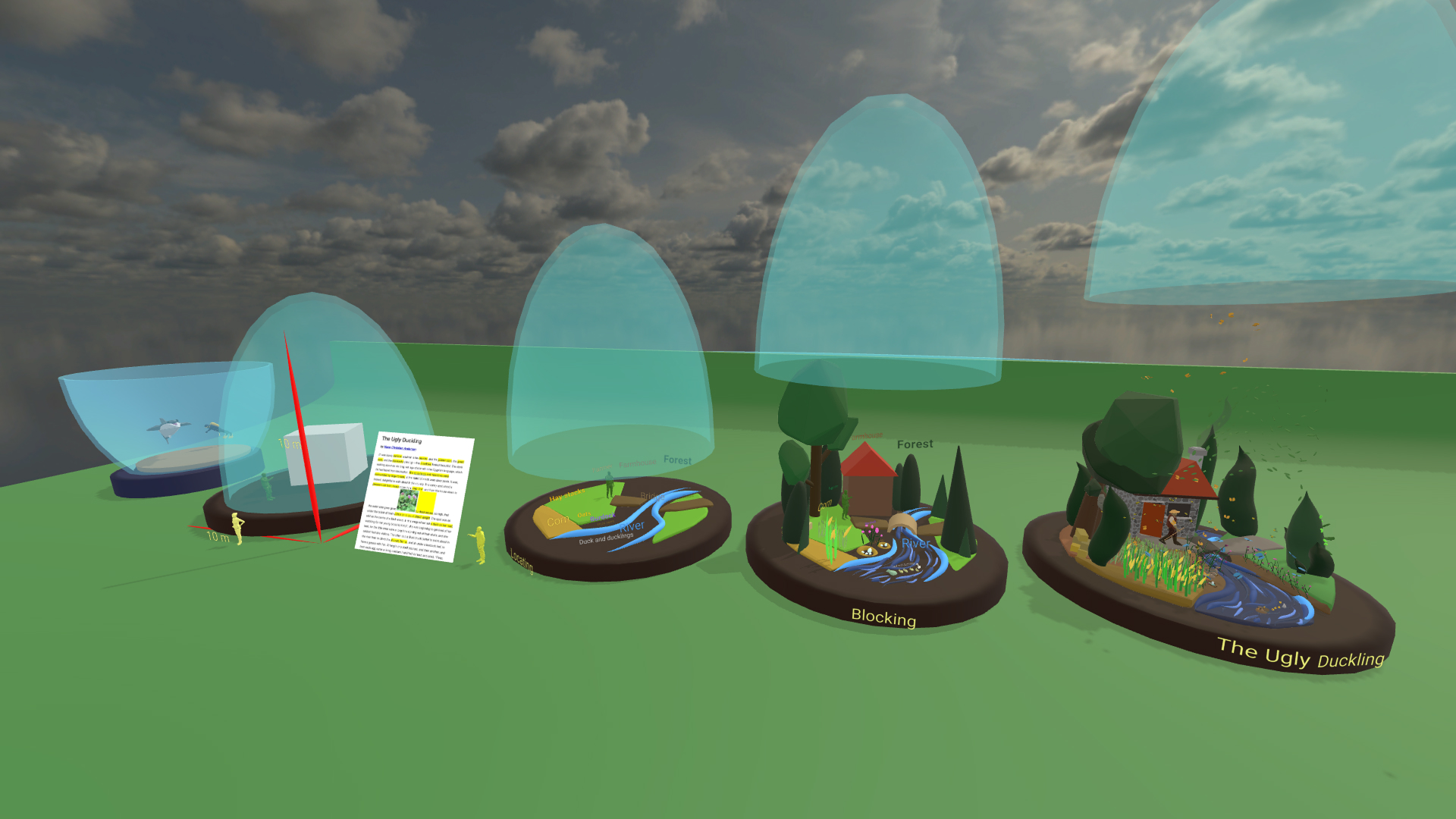Animation is coming to ShapesXR
Request early access!At the heart of one of North America’s leading tech hubs, Conestoga College is training adaptable XR generalists with skills in storytelling, simulation, and design. ShapesXR supports this vision by making immersive prototyping intuitive, collaborative, and professionally relevant—helping students gain fluency in VR while preparing them for industry-ready workflows
Conestoga College, located in the heart of one of North America’s leading tech hubs, has built a reputation as a research-driven institution and ranked among the Top 20 research colleges in Canada for pushing the boundaries of how new technologies can be applied in education.
Its Virtual Reality Production Program is designed to prepare the next generation of XR generalists, blending technical skills with creative storytelling. The program attracts students from diverse fields such as animation, design, computer science, and video production, and equips them to work across the rapidly evolving landscape of immersive media.
A core challenge the program identified was how to help students gain VR fluency quickly. While many arrive with technical or creative backgrounds, they are often not familiar with VR and complex game engines. Conestoga was therefore looking for a tool that would be easy to pick up, intuitive to use, and capable of building both confidence and creativity while wearing the headset.
ShapesXR quickly became a versatile tool within the program, giving students an intuitive way to prototype a wide variety of experiences. The learning curve was smooth for both staff and students, thanks to an interactive onboarding and a serie of tutorials students could follow while in VR. After an initial exploration of the interface and basic tools, the students applied their skills to hands-on projects that combined creativity with practical XR applications.
I find ShapesXR to be an intuitive, collaborative, and immersive platform that helps our new students acclimatize to VR, enhances their learning, streamlines XR prototyping, and fosters real-time teamwork in an industry-relevant environment. - Dr. Andre’ Plante

Two main project types highlighted how ShapesXR was used:
Students adapted classic children’s tales into VR environments, beginning with story analysis and research, followed by the reconstruction of a key moment in the story in the form of a 3D environment. To limit sprawl and encourage compact storytelling, students were challenged to design their scene within a snow globe or fishbowl using ShapesXR creative toolset composed of primitives, brushes and the vast library of assets.

Learners documented real-world processes such as warehouse logistics or manufacturing, then reconstructed them in 3D step by step with an enphasis on making the simulation informative and engaging, helping users understand complex workflows through immersive visualization. Students imported their own 3D assets and built interactions using the frames and trigger system in ShapesXR to make each stage clear and engaging.
.png)
Across both workflows, ShapesXR supported collaboration between peers and faculty, with students co-creating environments, sharing feedback in real time, and presenting their projects in VR or via the web app. This hands-on experience prepared them not only to prototype effectively but also taught them how to use VR as a tool to communicate and dissect both fictional and technical topics.
The introduction of ShapesXR had a transformative impact on classroom dynamics. By enabling students to prototype directly inside VR, it strengthened their spatial understanding, boosted confidence, and encouraged experimentation. The intuitive interface and real-time collaboration features created an environment where students could easily share ideas, receive immediate feedback, and iterate on their designs, making learning both more engaging and more tangible.
For educators, ShapesXR streamlined onboarding and allowed faculty to “step into” student projects, providing live guidance and critique in a shared VR space. This immediacy helped break down barriers for students new to VR or spatial design, many of whom noted that ShapesXR made their learning feel more real, immersive, and professionally relevant.
The tool also unlocked opportunities that would have been difficult with traditional desktop workflows. Rapid VR-native prototyping, asset modification, and the ability to export into Unity allowed projects to progress from concept to functional prototype seamlessly.
Feedback from both faculty and students has been overwhelmingly positive. ShapesXR is now considered a core tool within the foundational courses, praised for lowering the learning curve while supporting creativity across storytelling and industrial simulation. Looking ahead, the program plans to expand its use in cross-institutional collaborations and industry partnerships, further embedding ShapesXR as a platform for hands-on, collaborative, and future-ready XR education.